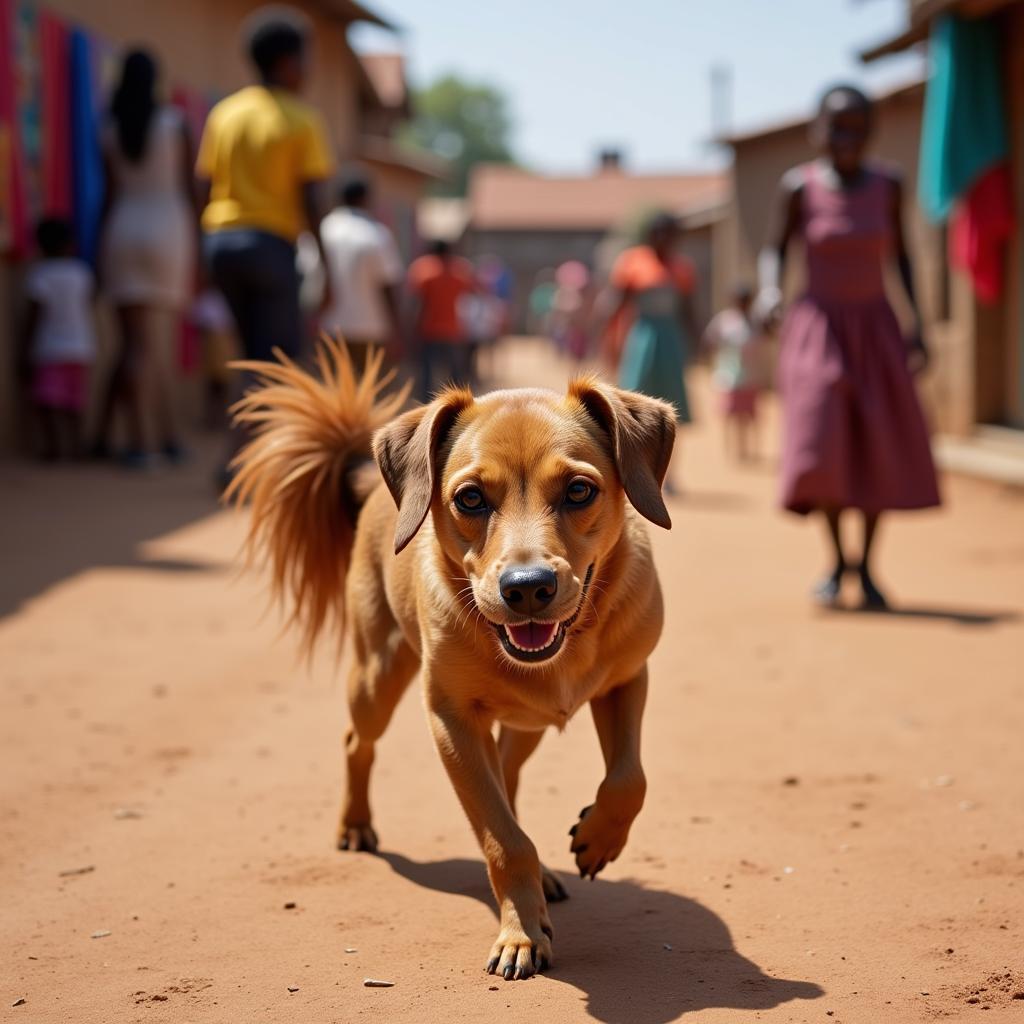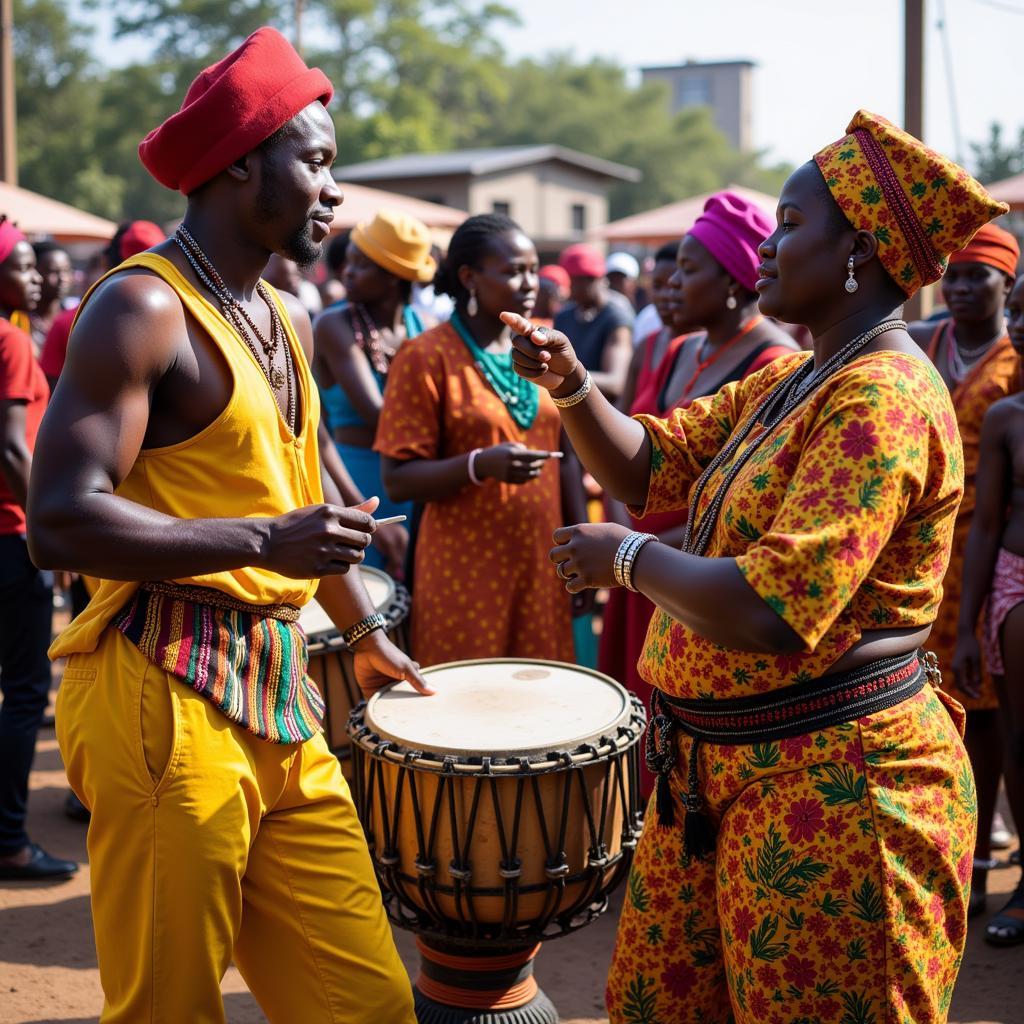The Comforting Embrace of African Baby Swaddles
African Baby Swaddles are more than just pieces of cloth; they’re a centuries-old tradition steeped in cultural significance and practical wisdom. From the vibrant kente of Ghana to the intricate mud cloth of Mali, these swaddles reflect the diverse beauty of the continent while providing comfort and security to newborns. african babys
The History and Cultural Significance of Swaddling in Africa
Swaddling has been practiced across Africa for generations, passed down through families and communities. It’s a practice deeply embedded in the cultural fabric, representing a symbolic embrace of new life and a connection to ancestral heritage. In many cultures, the swaddle is seen as a protective layer, shielding the infant from harm and negative energies. Specific fabrics and patterns often hold symbolic meaning, representing blessings, prosperity, or family lineage.
Different regions have unique swaddling traditions. For example, in some West African communities, babies are swaddled tightly with their arms straight at their sides, believed to promote straight limbs. In other regions, a looser swaddle allows for more movement. These variations highlight the rich tapestry of customs and beliefs that shape the practice of swaddling across the continent.
The Benefits of African Baby Swaddles
Beyond their cultural significance, African baby swaddles offer numerous practical benefits. The snug feeling mimics the security of the womb, soothing babies and promoting longer sleep. Swaddling can also help reduce the startle reflex, which can often wake infants. Many parents find swaddling helps calm fussy babies and establish predictable sleep patterns.
The breathable, natural fabrics commonly used in African swaddles, such as cotton and linen, are gentle on delicate skin and allow for proper air circulation. This is particularly important in warmer climates. The lightweight nature of these materials also makes them ideal for layering, ensuring babies stay comfortable in varying temperatures.
Choosing the Right African Baby Swaddle
With so many beautiful and unique options available, choosing the right African baby swaddle can be an exciting experience. Consider the climate and choose a breathable fabric like cotton for warmer weather. Look for swaddles made with natural dyes and avoid any harsh chemicals that could irritate your baby’s skin.
The size and shape of the swaddle are also important factors to consider. A larger swaddle offers more versatility, allowing for different swaddling techniques as your baby grows. Some swaddles feature Velcro or zippers for easy fastening, while others are tied traditionally. Ultimately, the best swaddle is the one that is safe, comfortable, and meets your individual needs and preferences.
How to Safely Swaddle Your Baby
While swaddling can be beneficial, it’s important to prioritize safety. Always place your baby on their back to sleep, whether swaddled or not. Ensure the swaddle is snug but not too tight, allowing for some chest expansion. Avoid covering your baby’s head or face with the swaddle. As your baby gets older and starts showing signs of rolling over, it’s crucial to transition away from swaddling to prevent suffocation.
Why Choose an Authentic African Baby Swaddle?
Opting for an authentic African baby swaddle supports artisans and communities across the continent. It’s a way to connect with a rich cultural heritage and embrace the artistry of traditional craftsmanship. Each swaddle tells a story, reflecting the unique traditions and techniques of its origin.
Aisha Kenyatta, a renowned Kenyan textile artist, shares her perspective: “African textiles are more than just fabrics; they’re a living embodiment of our history and traditions. Swaddling a baby in these textiles is a way to connect them to their roots and bless them with the spirit of our ancestors.”
Conclusion
African baby swaddles offer a beautiful blend of cultural significance and practical benefits. From promoting comfort and security to showcasing the vibrant artistry of the African continent, these swaddles represent a cherished tradition passed down through generations. By choosing an African baby swaddle, you’re embracing a piece of history and wrapping your little one in a comforting embrace. african babys
FAQs
- What types of fabrics are typically used for African baby swaddles? Cotton, linen, and Kente cloth are popular choices.
- How long can a baby be swaddled? It’s generally recommended to stop swaddling once a baby shows signs of rolling over.
- Are there different swaddling techniques in Africa? Yes, swaddling techniques vary across different regions and cultures.
- Where can I purchase authentic African baby swaddles? You can find them online, in fair trade shops, and from African artisans.
- What is the significance of the patterns on African swaddles? Often, the patterns hold symbolic meaning, representing blessings, prosperity, or family lineage.
- Can I use an African swaddle in warm weather? Yes, choose a breathable fabric like cotton for warmer climates.
- How do I care for an African baby swaddle? Follow the care instructions specific to the fabric.
Common Swaddling Scenarios
- Newborn Fussiness: Swaddling can help soothe a fussy newborn by providing a sense of security.
- Startle Reflex: Swaddling can help reduce the Moro reflex, which often wakes infants.
- Establishing Sleep Patterns: A consistent swaddling routine can help establish predictable sleep patterns.
Related Questions & Articles
- Explore the different types of African textiles.
- Learn more about traditional African baby-wearing practices.
- Discover the significance of color in African culture.
Call to Action:
For any assistance or inquiries, please contact us at Phone: +255768904061, Email: kaka.mag@gmail.com, or visit us at Mbarali DC Mawindi, Kangaga, Tanzania. We have a 24/7 customer service team available.


